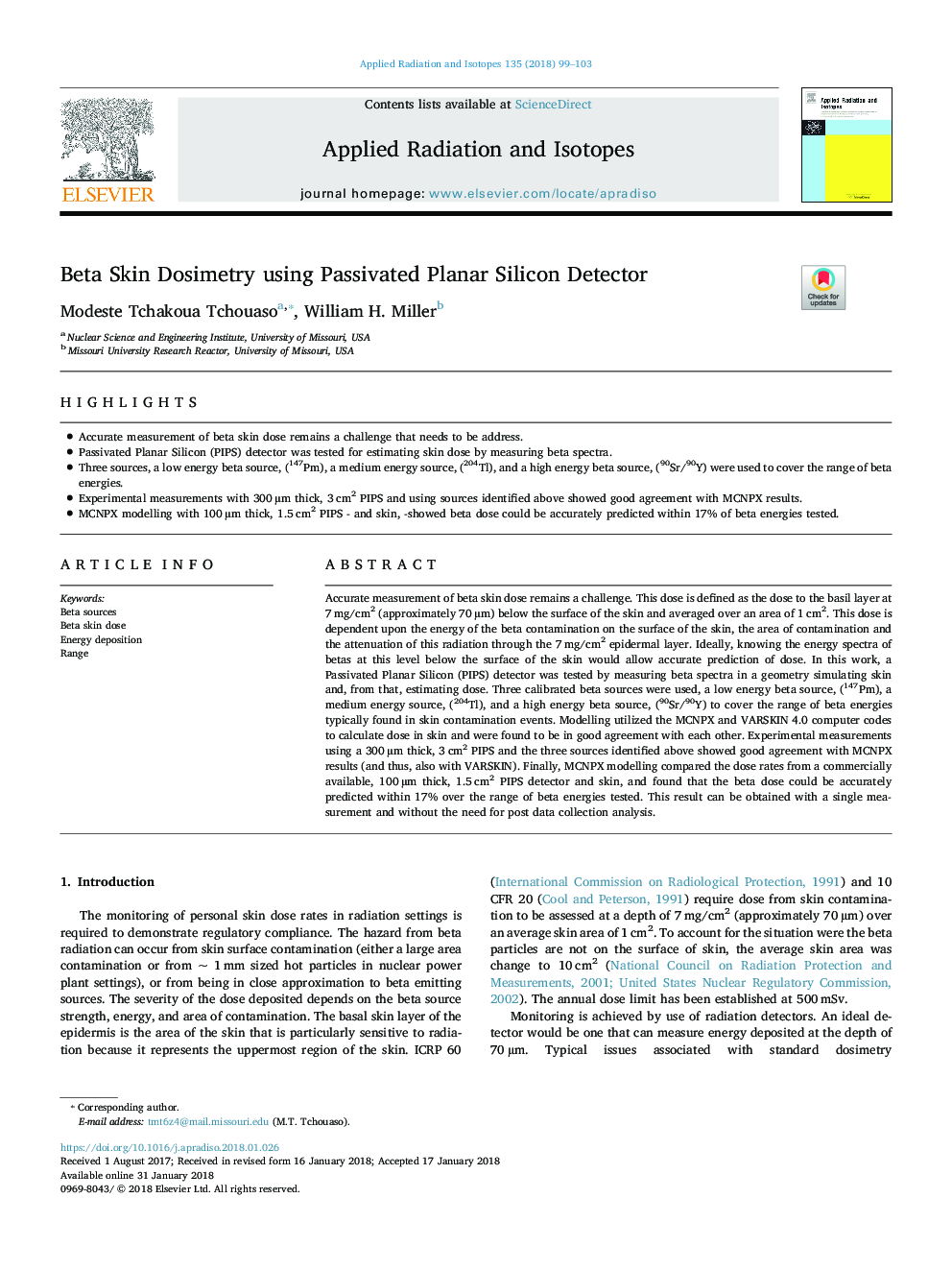| Article ID | Journal | Published Year | Pages | File Type |
|---|---|---|---|---|
| 8208614 | Applied Radiation and Isotopes | 2018 | 5 Pages |
Abstract
Accurate measurement of beta skin dose remains a challenge. This dose is defined as the dose to the basil layer at 7â¯mg/cm2 (approximately 70â¯Âµm) below the surface of the skin and averaged over an area of 1â¯cm2. This dose is dependent upon the energy of the beta contamination on the surface of the skin, the area of contamination and the attenuation of this radiation through the 7â¯mg/cm2 epidermal layer. Ideally, knowing the energy spectra of betas at this level below the surface of the skin would allow accurate prediction of dose. In this work, a Passivated Planar Silicon (PIPS) detector was tested by measuring beta spectra in a geometry simulating skin and, from that, estimating dose. Three calibrated beta sources were used, a low energy beta source, (147Pm), a medium energy source, (204Tl), and a high energy beta source, (90Sr/90Y) to cover the range of beta energies typically found in skin contamination events. Modelling utilized the MCNPX and VARSKIN 4.0 computer codes to calculate dose in skin and were found to be in good agreement with each other. Experimental measurements using a 300â¯Âµm thick, 3â¯cm2 PIPS and the three sources identified above showed good agreement with MCNPX results (and thus, also with VARSKIN). Finally, MCNPX modelling compared the dose rates from a commercially available, 100â¯Âµm thick, 1.5â¯cm2 PIPS detector and skin, and found that the beta dose could be accurately predicted within 17% over the range of beta energies tested. This result can be obtained with a single measurement and without the need for post data collection analysis.
Keywords
Related Topics
Physical Sciences and Engineering
Physics and Astronomy
Radiation
Authors
Modeste Tchakoua Tchouaso, William H. Miller,
